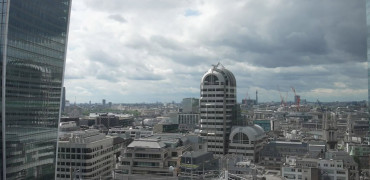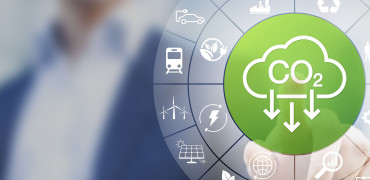Last week I spoke at an event called ‘Solutions for decarbonising heritage estates’, as part of the Retrofit 24 campaign at the Building Centre in London’s Store Street.
It was great to see the room packed with around 100 consultants, architects, and specifiers, who will be key to helping adapt older buildings, whether heritage or not, and making them fit for net zero.
Amongst the issues discussed were how to ensure that any works were effective in heritage buildings without harming the significance of the building or the wider area.
Around 80% of the buildings that we will all use in 2050, when we must reach the legally binding net zero targets, have already been built. This includes millions of buildings that are part of our heritage and will often be listed, restricting changes that can be made to the fabric.
So, it was an important debate and the audience seemed very appreciative of the expertise on show.
The most important thing is that heat pumps are designed, installed and applied correctly to begin with
Adaption is key
First up was our Chair for the evening, Josh McCosh, a Partner at Van Heyningen & Haward Architects, who opened the event by highlighting how retrofit versus demolition and rebuild was a big part of the discussion, as the debate over Marks & Spencer in nearby Oxford Street shows.
He spoke about how important heritage is to the nation but how equally important comfort is, because buildings are for people and become a deadweight if they can’t be used.
Adaptation is therefore key and retrofit can not only help with running costs but also increase the resilience of the building in coping with climate changes.
However, the performance of these buildings must be improved if we are to decarbonise them in the way we need to.
Forever buildings
Next up was James Basey an architect and building surveyor for the National Trust, who spoke eloquently about the challenges of preserving over 28,000 buildings, and the huge diversity of their estate.
He talked about the fact that they were not only trying to improve the buildings and reduce carbon emissions, but they were also trying to preserve them because their mission was to be involved with their buildings forever.
With such a varied portfolio, James explained how no one solution would work in every situation, but also how climate change is threatening over 70% of their portfolio with the cycle of rain, damp, heat and pests causing damage to the fabric of many buildings.
We then heard from Steve Richmond, Head of Marketing and Technical at REHAU, who spoke about the pipework needed to move heat energy around efficiently, before Dave Tiller, Technical Surveyor for window maker, Ventrolla spoke about the challenge of increasing thermal efficiency in heritage buildings when replacing the windows.
Both presenters talked about the need to involve suppliers as early as possible, stating that early involvement ultimately meant a better solution and less cost.
Moving heat around
When I began my short presentation, I told the room how my cynical teenage daughter said “Dad, dad, I can’t get to sleep. Tell me about heat pumps!”
And there is a lot of cynicism and a lack of understanding about the technology, but we can no longer afford to just bury our head in the sand pretending nothing is wrong or sit around waiting for some mythical technological silver bullet.
The technology that can make a difference right now already exists in the form of heat pumps, which are already around 300% efficient and will get better and better.
As the electricity grid gets greener and cleaner, heat pumps become even more advantageous than gas boilers. At the moment, one kilowatt of heat from a gas boiler will produce around 225g of carbon, compared with 54g from a heat pump.
I also like to highlight the fact that the net zero target of 2050 is just 307 paydays away, which helps focus attention.
It is also a destination without a map and everyone is starting from different places, which is why we are so keen to share our knowledge and experience as no one person, company, or even country can do this alone.
The retrofit challenge
For heritage buildings using heat pumps, the challenge can come from the difficulty in changing the heat emitters coupled with historic single pane glass windows which are not the most thermally efficient.
The solution comes from a combination of three things:
- Increase the size of the radiators or heat emitters so they can deliver the required amount of heat at a reduced temperature which helps heat pump efficiency.
- Increase the flow temperature from the heat pump which is absolutely possible but has some drawbacks
- Reduce the need for heat to allow an optimised heat pump solution to be easily integrated
It’s also worth highlighting the fact that heat pumps are not just available for homes in 3, 4, or 5kW versions, they can be used for much larger buildings and are available right up to 1,000kW or more.
The most important thing is that they need to be designed, installed and applied correctly to begin with.
A phased approach
What we will probably see over the next 5 to 10 years is heat pumps being used alongside existing heating systems, so that the carbon emissions can be lowered as buildings transition away from fossil fuels and embrace a renewable future.
This is perfectly possible right now and a heat pump will always be lower carbon than a boiler so owners of any building, whether heritage or not can map a clear plan where they can:
- Add a heat pump and balance the use of both technologies to minimise carbon emissions throughout the year.
- Adapt the system over time so that the heat pump becomes the dominant technology.
- Remove the gas system, so the heating is provided from a completely sustainable source.
We need to remember that a heat pump is all about energy use and moving it from where it is not needed to where it is.
They are already very good at it, and they are only going to get better.
Welcome to the age of the heat pump.
Chris Newman Zero Carbon Design Manager- Mitsubishi Electric




